Bog turtles are North America’s smallest turtle but it’s not only their size that makes them hard to find. Threatened by poaching and habitat loss, the turtle is rare in the northeastern U.S., where known locations are kept secret for its protection. But in western Massachusetts, TNC watershed conservation manager Angela Sirois-Pitel is confident that decades of land management have helped restore the rare fen wetland the turtle relies upon. Now, armed with a bucket and a camera, she and her assistants are going in search of new populations.
- People have been tracking bog turtles in western Massachusetts going back decades now. They’re super cute, of course. But why is there this scientific interest in them?
-
Bog turtles aren’t this keystone species, but besides being incredibly cute, they are a good indicator for a healthy fen, which is this rare wetland type that a lot of other rare species are found in conjunction with. So, by managing for the bog turtle, we’re managing for a lot of other rare plants in a system that’s globally threatened.
- What has that management looked like over the years?
-
TNC keyed into this area in the ’80s because of a lot of rare species that were being documented there and it supported some of the initial surveys and research that happened in these wetlands. TNC hired a then-PhD student, Alison Whitlock, to understand the turtle populations [in the ‘90s]. We didn’t know what habitat they were using and where were they overwintering. So she looked at all sorts of stuff like what they prefer for vegetation, and the hydrology, and then she did nesting studies too: She attached little thread bobbins to the turtles and would leave the turtles out for 24 hours and go see if she could find their nests, and then she would X-ray them. It was a really impressive study for the ’90s.
TNC used that research as well as vegetation and hydrology studies to understand how to manage these fen communities. From the late ’90s on they really ramped up a restoration program that included invasive plant control, prescribed fire, and going in to manually remove trees because the turtles needed more open [canopy] space.
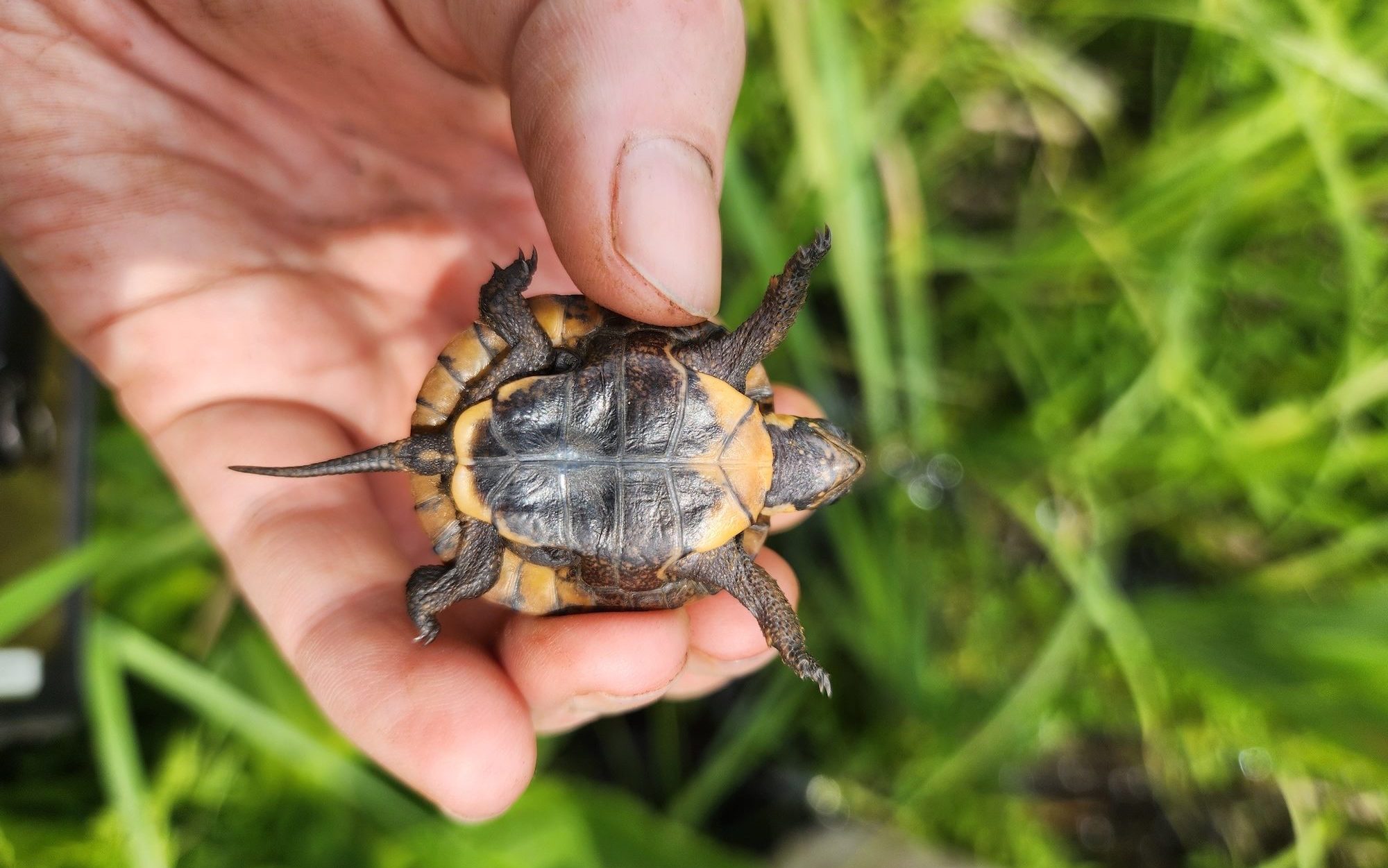
- Since then there have been multiple generations of bog turtle research. Tell me about that.
-
Well when I got involved, it had been almost 10 years since Alison had finished up her PhD. I went in to assess both how the site had changed, and how the turtles were doing. What we saw was at one site, the turtles were doing really well. They had a stable or slightly increasing adult population. At the other site, they were not doing as well, and we were seeing a decline in the adults.
(Today we have an interagency team that looks at both sites and works at both sites. And we’ve ramped up habitat management with prescribed fire and marsh masters going in to clear vegetation.)
But by around 2018 we’re like, it’s been 10 years since my study now. So in 2018, we hired a contractor to do some telemetry and surveys, and that launched another multi-year study. We had a TNC AmeriCorps member serving in our office, Julia Vineyard, and she did a bunch of the tracking that summer. And then Julia came back and did her master’s [thesis] on the bog turtle too.
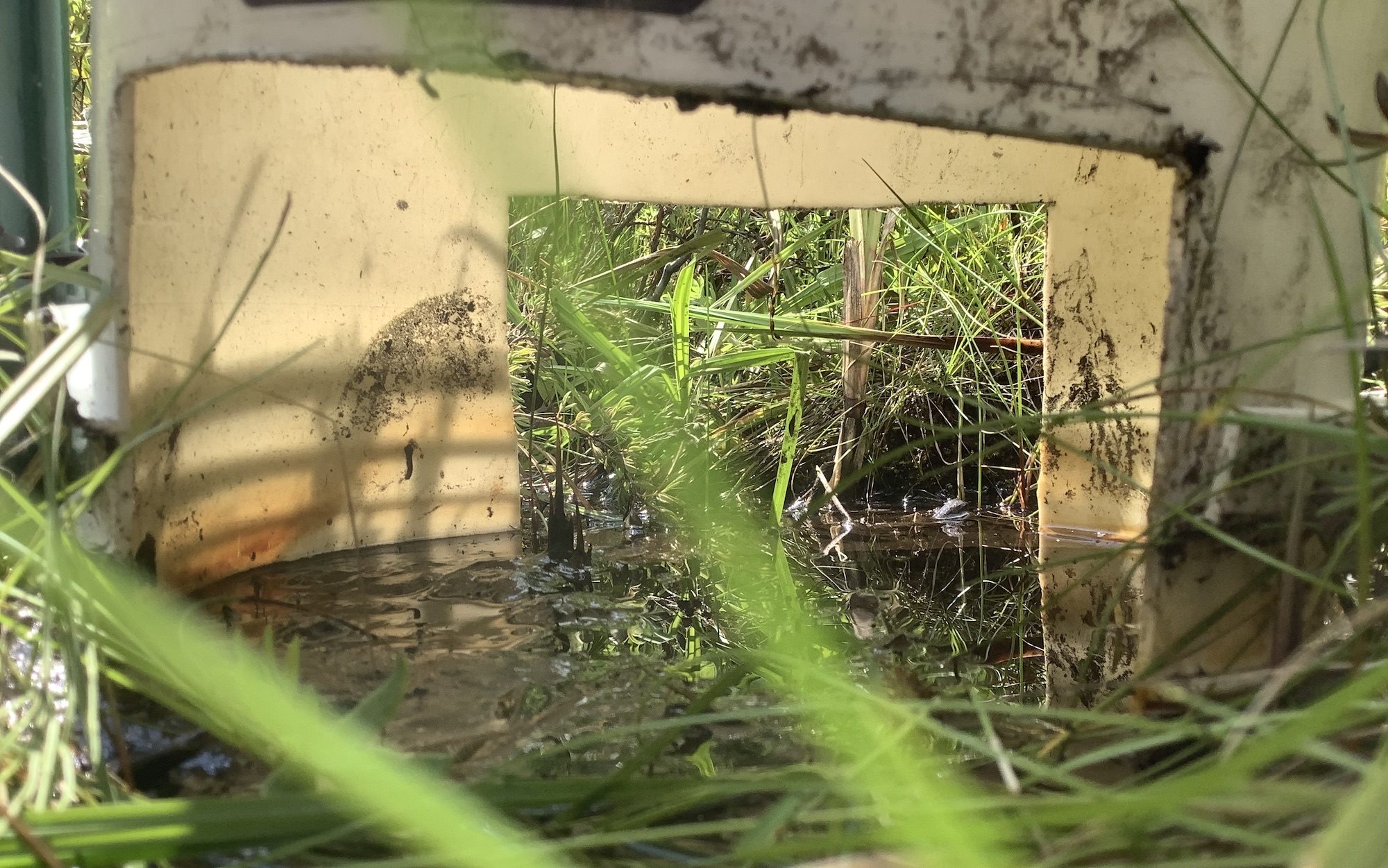
- So first Alison Whitlock’s research in the ‘90s and then yours in the 2000s and then Julia Vineyard’s in the 2010s—
-
Yeah, a thing I love about this story is how women have literally been at the core of this entire project. From the researchers to the managers to the landowners, it is a very empowering place for women.
- Where does this series of research projects stand now?
-
We’re seeing good results where we’ve done management. At one site we’re actually seeing the animals expand out into areas that they had never been before. What we think that is showing is they’ve saturated that place, and now they’re going out to explore. Ultimately, that’s a good sign. You have more resiliency to risk: If a site does get flooded out or something changes, there’s still other places those animals can move to and adapt. But what we’ve realized is that running the telemetry studies is really time intensive. We have to be there every week checking on them.
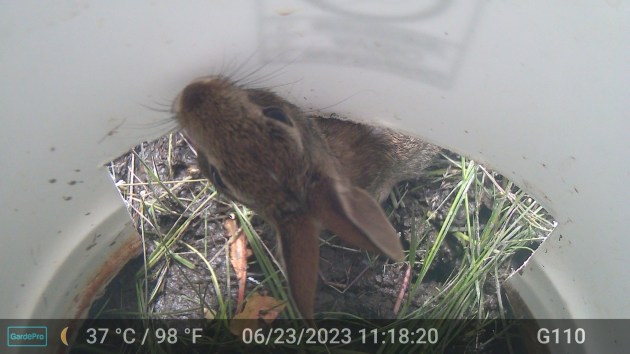
- So, you’ve turned to camera traps attached to buckets—something that can be used to track lots of different types of small animals. How does that work?
-
We had heard about some partners in South Carolina that were using camera traps and I think other researchers have used it in Florida. This design is not something new, but it’s new to us.
You take a five-gallon bucket and you cut holes, or tunnels, in the sides so that when you flip it upside down, something can walk through it. And then you mount the camera inside to the bottom of the bucket, so when it’s tipped upside-down, the camera is looking at the ground.
Bog turtles use these rivulets on the ground where they move around. They’re like little roads—a good environment to deploy these kinds of buckets.
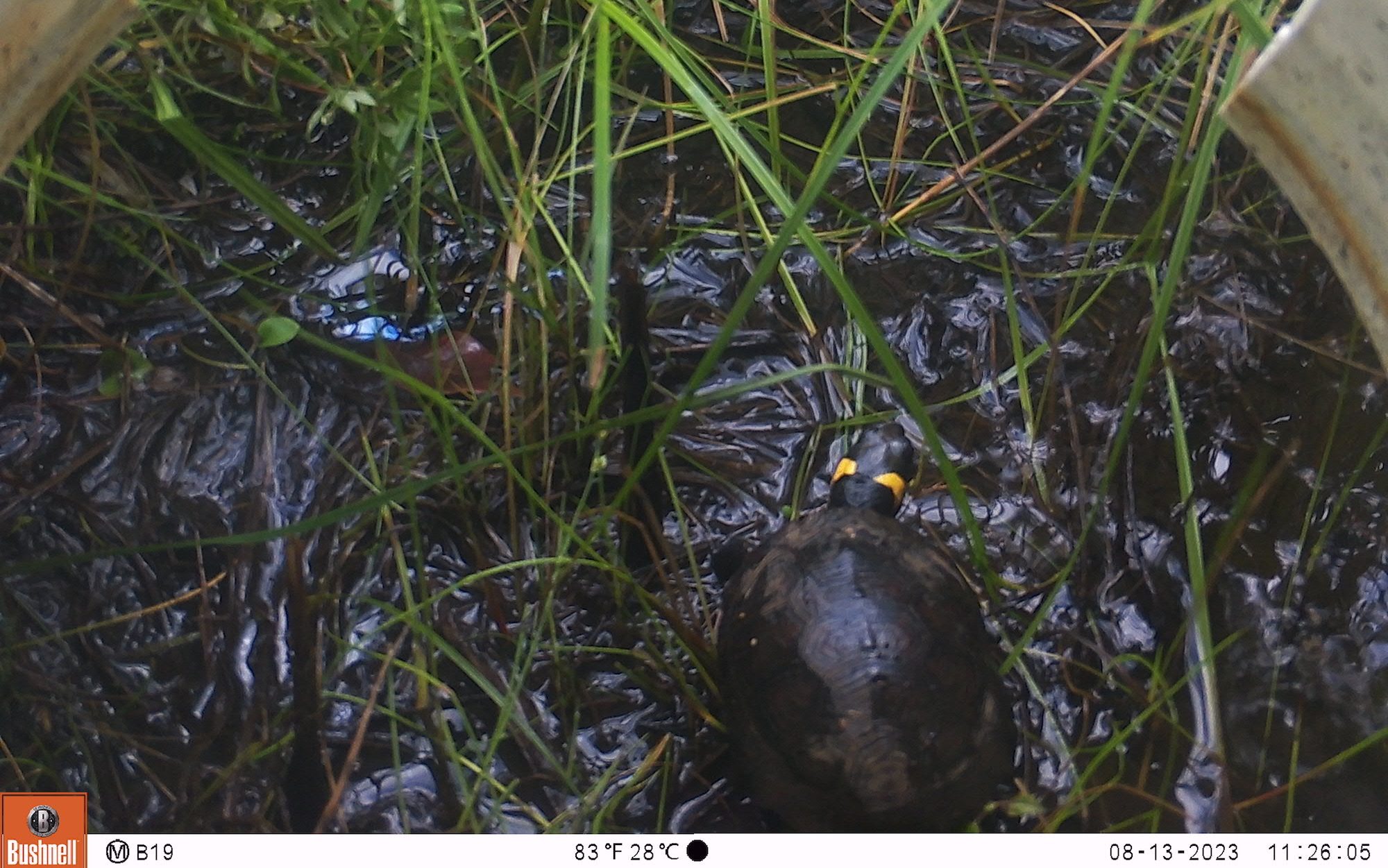
Researchers have placed the bucket camera traps in areas they think make good bog turtle habitat in hopes of seeing one, like this one, walk on through. © TNC Massachusetts We’re trying to find new bog turtle sites, where we think the conditions are good, but we haven’t seen them. Setting traps is really time intensive: You have to install the traps, and you have to check them daily. But if you could leave cameras out for an entire summer, you can monitor a new potential site. All you need to know is if there’s one turtle there. Then people can go out and do a heavy investigation.
We wanted to use these both as a way to explore new potential sites, as well as to get better data about our existing sites. We started with 10 cameras in 2022. And then this past year we deployed 20 camera traps throughout the summer, including 10 we moved around between four wetland sites where we thought there could be turtles. We actually still had animals on radio [for the telemetry project] as well this entire time. So we had some data that overlapped where some known animals were on the site as well as the cameras.
- What are you hoping to do next season?
-
We’ll probably deploy some cameras [at a new site]. And then I think that we will probably continue to deploy them at some of the sites where we think there might be turtles, and maybe we’ll just leave them out for a month at a time instead of just two weeks. And see, does that change anything? Do we get a detection? How does the data change with a longer duration?
We’ll also continue to use them for pre- and post-habitat management monitoring

- What does that entail?
-
Well we’re trying to use prescribed fire more; [burning crowded brush] can be a great tool to open up the habitat. But the burn window is small because of the turtles. [It’s safest to burn when the turtles are hibernating underground.] So, if we can adjust that burn window a little bit…if we could burn earlier in October, or later in other areas, for instance, we can use the cameras to have that confidence that the animals aren’t at risk, that would lead to better success with our prescribed fire program.
We actually did this for the first time [last] year. We wanted to clear four acres in a wetland, because we think it will be good habitat. We could, of course, have people walk through [the wetland]. But this time, we just put the buckets out for two weeks and we didn’t see turtles. So, one, it makes us feel safer about having a little bit more aggressive of a land management approach—we wouldn’t do this kind of thing if we knew there were turtles there. And, now we can deploy the cameras in the next couple of years, and see if we detect turtle populations.
A version of this interview ran in Nature Conservancy magazine’s first issue of 2024. Read about eels, an effort to save Alabama sturgeon and other stories on nature.org/magazine.
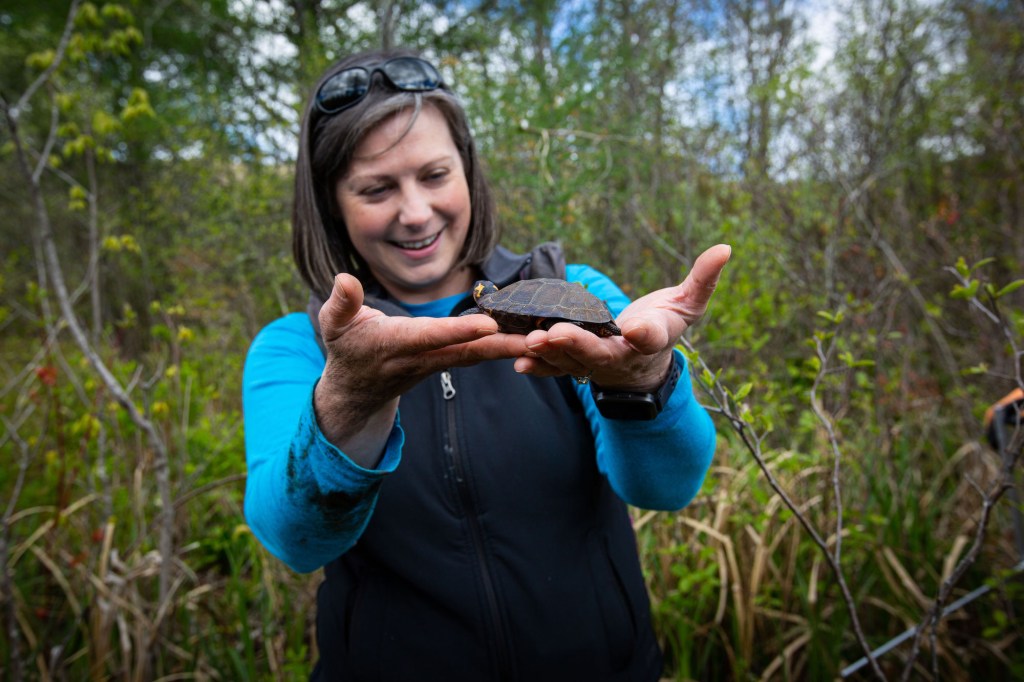



Join the Discussion